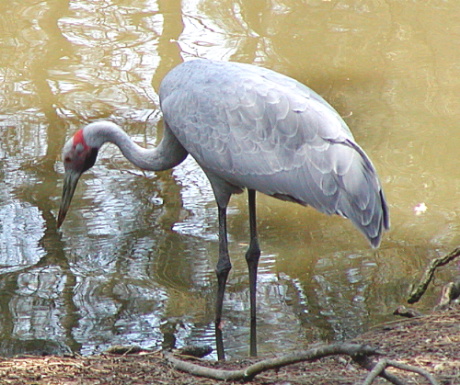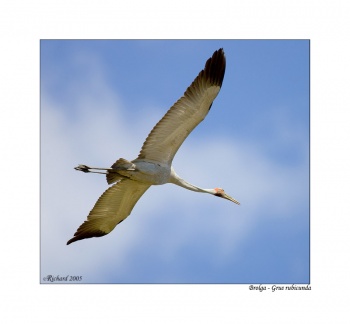- Antigone rubicunda
Grus rubicunda
Identification
70-160 cm (27½-60 in); wingspan 200–230 cm (78¾-90½ in)
- Grey upper and underparts
- Featherless red head
- Grey crown
- Broad red band around back of head
- Bone bill
- Black chin wattle
- Grey legs
Juvenile lacks red band
Distribution
Northern and eastern Australia and Trans-Fly of southern New Guinea
Taxonomy
This is a monotypic species[1].
Also placed in the genus Grus.
Habitat
Marshlands, lagoons, floodplains, grassland and dry bushland.
Behaviour
Diet
The diet includes wetland plants, insects, invertebrates and small vertebrates such as frogs.
Breeding
Both sexes build a raised mound of sticks, grass and plant material, in shallow water on an island. The 2 dull white eggs have reddish brown splotches and are incubated by both parents for about 30 days.
References
- Clements, J. F., T. S. Schulenberg, M. J. Iliff, D. Roberson, T. A. Fredericks, B. L. Sullivan, and C. L. Wood. 2016. The eBird/Clements checklist of birds of the world: v2016, with updates to August 2016. Downloaded from http://www.birds.cornell.edu/clementschecklist/download/
- Birds in Backyards
- BF Member observations
- Handbook of the Birds of the World Alive (retrieved August 2016)
Recommended Citation
- BirdForum Opus contributors. (2025) Brolga. In: BirdForum, the forum for wild birds and birding. Retrieved 13 May 2025 from https://www.birdforum.net/opus/Brolga
External Links
GSearch checked for 2020 platform.






